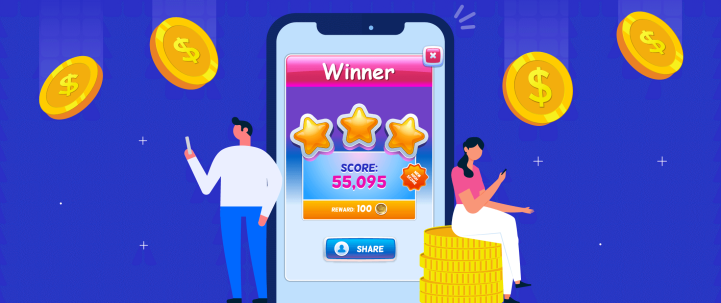Do you want the good news or the bad news first?
Good news it is! 2.6 billion people played mobile games in 2020, and mobile games saw 13.3% revenue growth this year.* Turns out, a global pandemic can end up being a pretty good incentive for people to reach for their phones and find some new entertainment.
The bad news? Only 38% of mobile gamers pay for games.*
Mobile users are notoriously difficult to convert into paying customers, and a low barrier for entry is also a low barrier to exit. Keeping and converting mobile gamers continues to be a major challenge for game developers and marketers.
So the question becomes: if the only way to attract mobile gamers is with free content, how do free games make money? 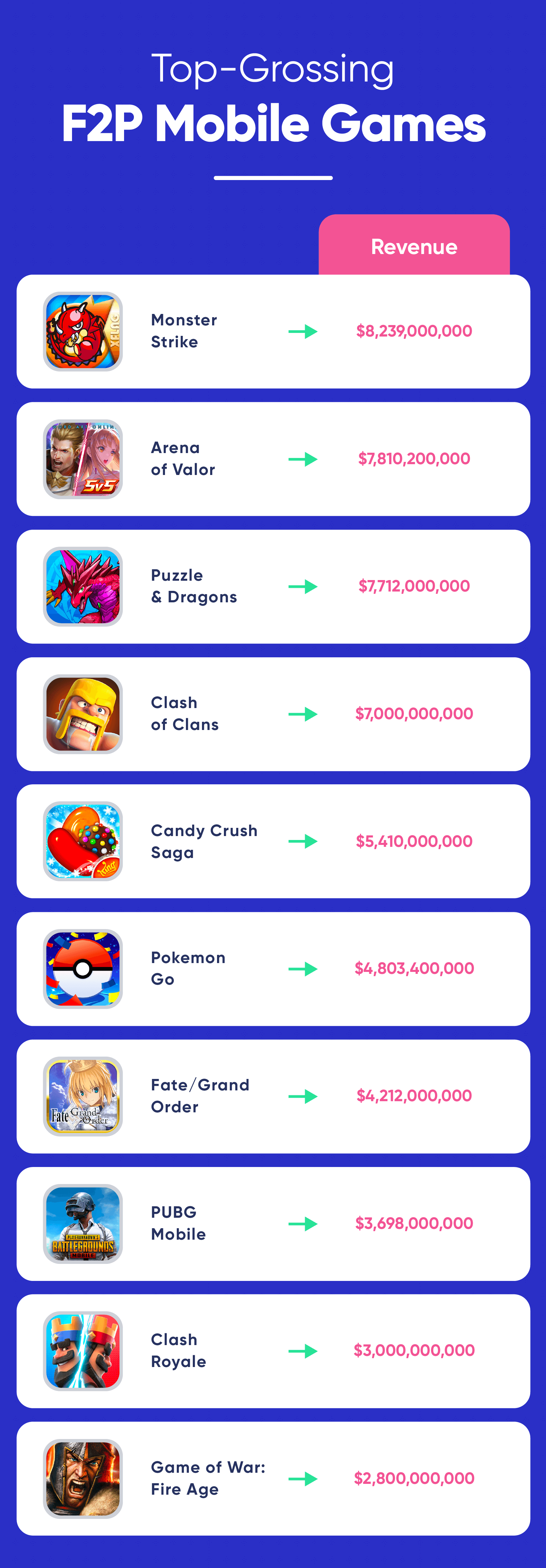
Revenue Models for Monetizing Free Mobile Game Apps
1. In-App Purchases (IAP)
The most popular free-to-play monetization strategy is in-app purchases. Global revenue from in-app purchases hit $120 billion in 2019* and total revenue for 2020 is projected to be almost double that amount.*
What is IAP in gaming? You already give players a steady stream of lives or consumables to complement their gameplay. With in-app purchases, they can choose to pay for additional items instead of having to earn or wait for them. And with mobile gamers spending an average of $87 on in-app purchases annually,* they’re a significant source of potential revenue. 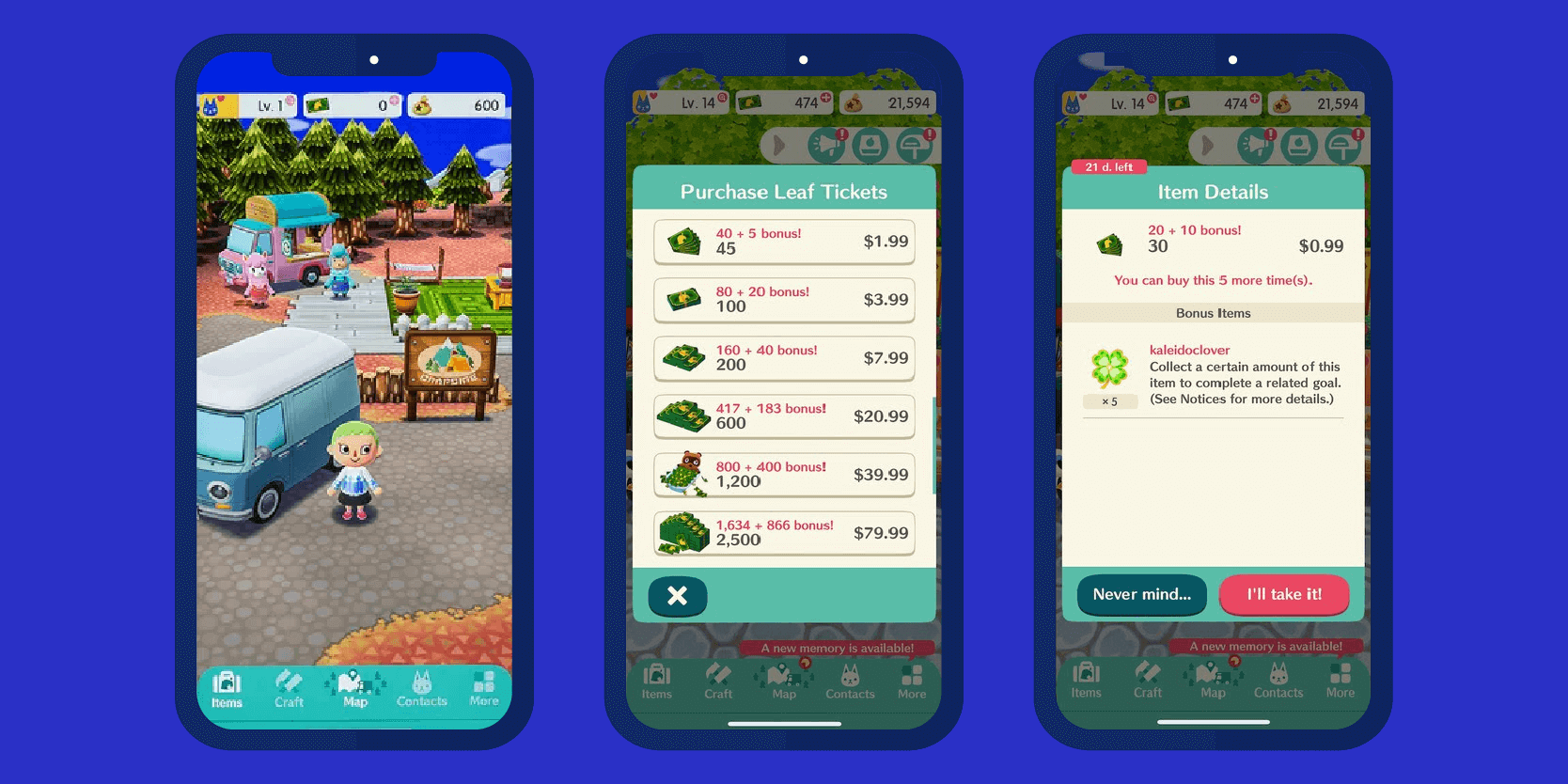
Nintendo: Animal Crossing
Half of in-app purchase revenue comes from only 10% of players.* This means two things.
One: you must be able to identify these players and engage them effectively. RFM Analysis is one way to segment your user base and pinpoint your champion players who engage most frequently and spend the most money. Send them push or in-app notifications teasing exclusive or limited-time items, email them surprise bonus rewards, add social sharing/referral incentives, cross-promote your other games, etc.
And two: it means focusing on retention is essential. Players won’t spend money unless they’re engaging with the game on a regular basis and see value in the purchase.
Effective onboarding is one of the best ways to ensure new players stick around. Players with higher engagement on the first day of download come back more frequently and have longer session times, and players that make a purchase within the first three days spend more than the average player.*
Help new players immediately immerse themselves in your game by streamlining your onboarding. Instead of hand-holding new players, use microinteractions or UI elements to indicate what new players should do (run in a certain direction, climb a certain wall, open a certain box). Consider snoozed onboarding that lets new players skip through onboarding flows, or show them where tutorials can be found and let players choose whether to use them.
How much should you charge for in-app purchases? Start by offering a variety of prices for in-app purchases, and keep pricing simple so that players can quickly decide whether they’re interested in the item and get back to playing. Over time, you can learn what your players are comfortable paying and tailor your pricing strategy accordingly.
Microtransactions that boost player abilities can make the game more fun, but they can also make games feel unbalanced and frustrating for players who choose not to spend. Be careful in the way you set up your microtransactions and in-app purchases so that players aren’t forced to spend money in order to get a full experience of your game.
2. In-App Advertising & Rewarded Video
Instead of getting a lot of revenue from a few players, in-app advertising helps you get a little bit of money from all of your players.
Interstitial ads are popular, but they can also be more disruptive to the playing experience, tend to annoy users, and can lead to churn. If possible, limit or avoid interstitials or splash screen ads.
Consider more innovative formats that make ads more engaging, like cube ads that display up to six images and a video on each side, or virtual scratch-offs where players “scratch” away the screen to reveal an ad. Incentivized ads like rewarded video offer an in-game incentive in exchange for viewing an ad.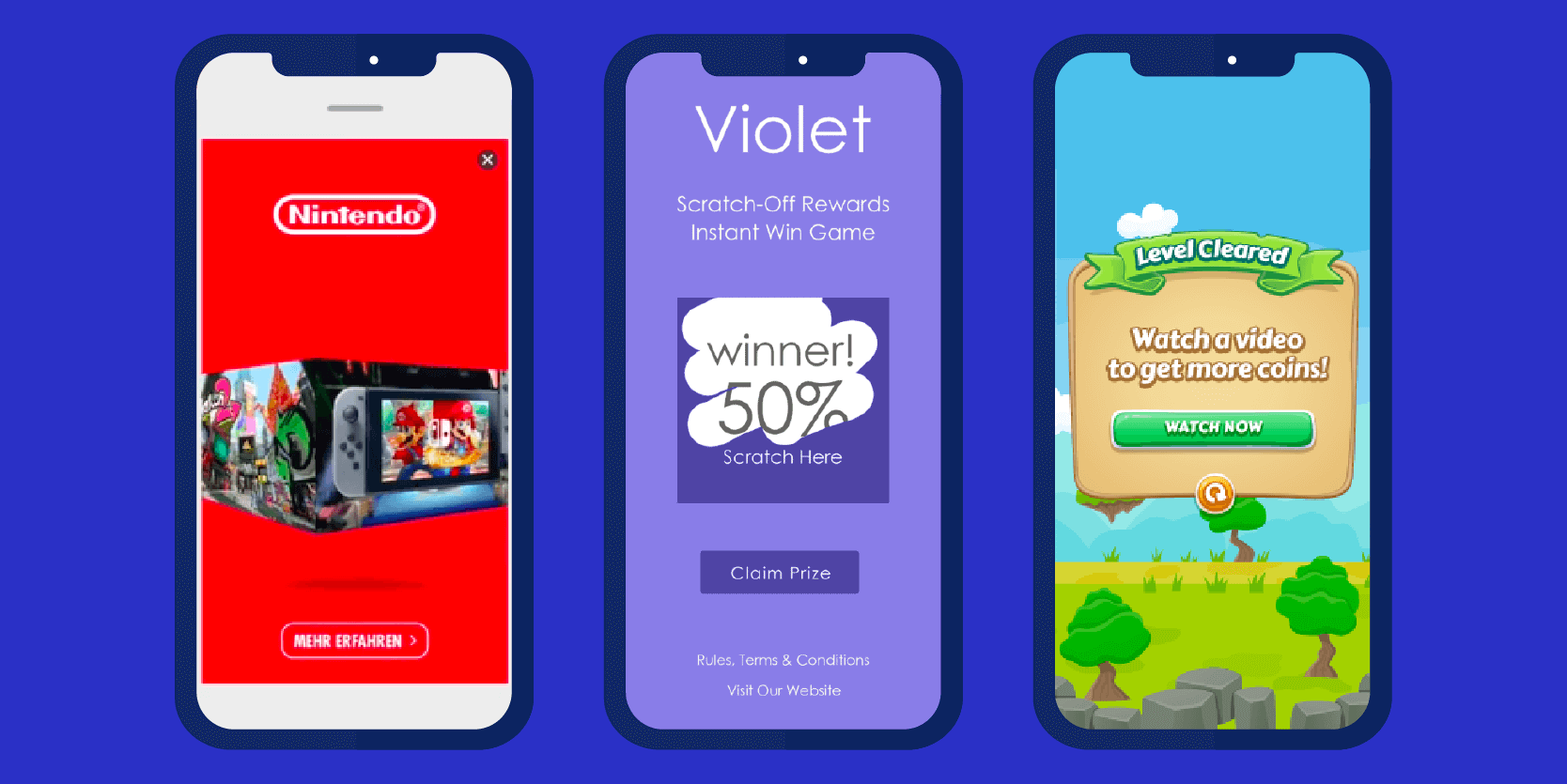
Players overwhelmingly prefer these types of ads. 71% of players say rewarded video ads are their preferred way to “pay” for a mobile game. And they typically don’t affect other revenue streams: 86% of developers saw IAPs stay constant or even increase after adding rewarded ads to a game.*
Just make sure to add cooldowns for rewarded videos, since letting players watch unlimited reward videos can drive down your CPM. You want players to actually click on ads at a decent rate, otherwise advertisers will reduce what they pay you for ad spots.
By tailoring ad content for specific users, you can show players relevant ads that they’re more likely to click on — making both your players and advertisers happier.
3. Native In-Game Advertising
Native in-game ads integrate contextual ads into the game itself. These usually appear as branded objects within the game, like Nike Air Jordans appearing in Fortnite, branded Pokestops in Pokemon Go, or billboards in Grand Theft Auto.
The key to making this work is knowing your players and ensuring the brands and products you integrate into your app are the right fit. Native advertising only works if it blends in with the world and context of your game. If it doesn’t, it can feel even more disruptive than regular advertising and annoy your players.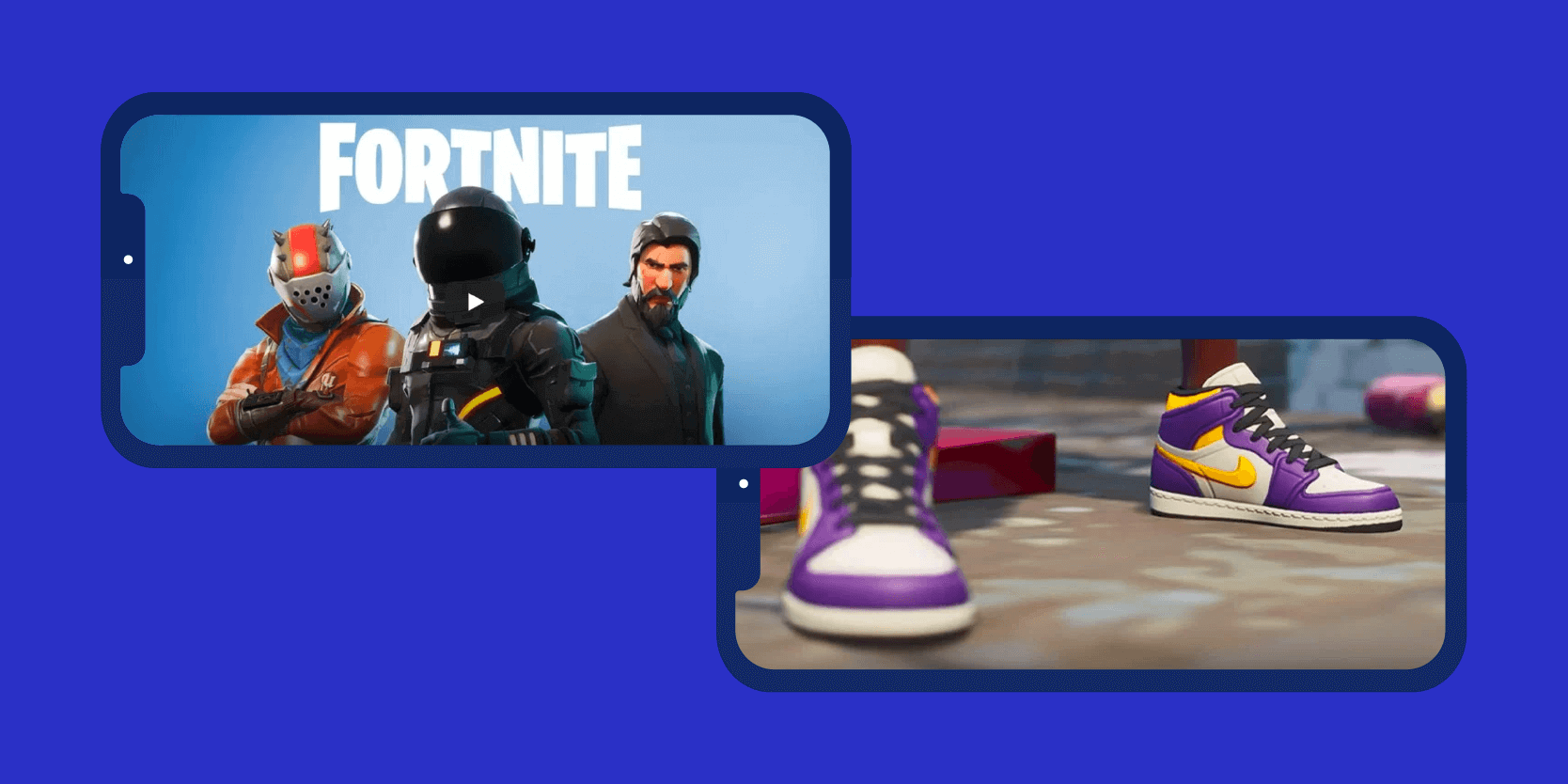
Nike Air Jordan + Fortnite
The Ultimate Cheat Code: Know Your Players
Deciding between building a fun, authentic playing experience and making money can feel like its own impossible puzzle. But you don’t have to choose one or the other. User data is your goldmine in both understanding what kind of experience your audience wants and engaging individual players in order to deliver that experience and drive mobile game monetization.
A once-avid player hasn’t opened the app in two weeks? Send an email with a discounted starter pack for one of your other game titles. A player is grinding to beat a boss? Use an in-app notification to tempt them with a special booster pack that will help them level up quickly. A player is obsessed with customizing their avatar? Send a push notification with a pack of limited-edition weapons or skins.
Making money from your free game doesn’t have to come at the expense of your players or the world you’ve built with your game. Give players the experience they want and they will open their wallets to support you — more than 85% of the gaming industry’s revenue comes from free-to-play (F2P) games.* With the right mobile game monetization strategies in place, your free game can absolutely establish and maintain a steady revenue stream.
The key question you should ask yourself is: which of the mobile game monetization models will be more enjoyable for your users? More enjoyment means more engagement, which in turn means greater retention and revenue. Now that’s a win/win.

Level Up: Lessons in User Retention from the Gaming Industry
Shivkumar M 
Head Product Launches, Adoption, & Evangelism.Expert in cross channel marketing strategies & platforms.
Free Customer Engagement Guides
Join our newsletter for actionable tips and proven strategies to grow your business and engage your customers.














































